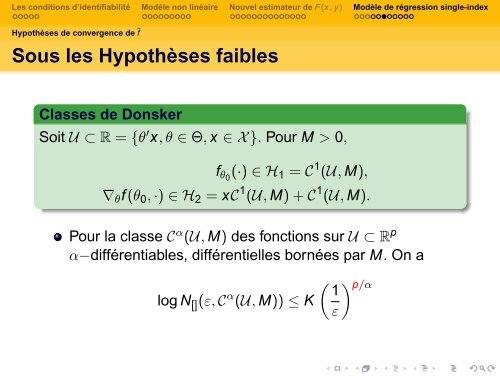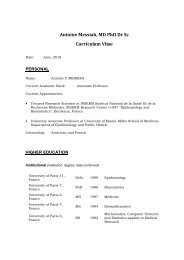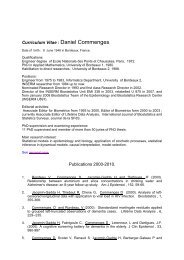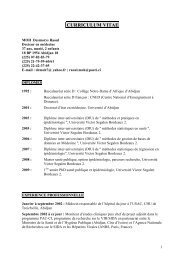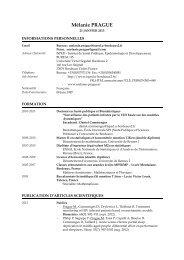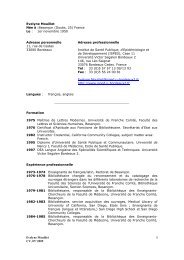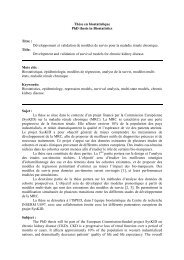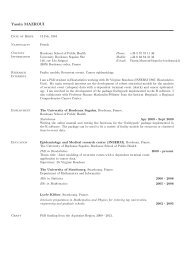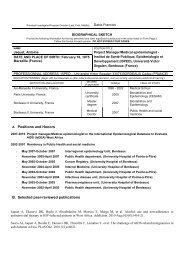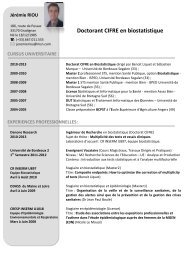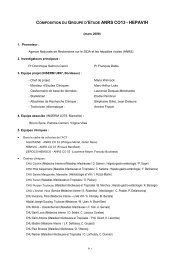- Page 2 and 3:
Les conditions d’identifiabilité
- Page 4 and 5:
Les conditions d’identifiabilité
- Page 6 and 7:
Les conditions d’identifiabilité
- Page 8 and 9:
Les conditions d’identifiabilité
- Page 10 and 11:
Les conditions d’identifiabilité
- Page 12 and 13:
Les conditions d’identifiabilité
- Page 14 and 15:
Les conditions d’identifiabilité
- Page 16 and 17:
Les conditions d’identifiabilité
- Page 18 and 19:
Les conditions d’identifiabilité
- Page 20 and 21:
Les conditions d’identifiabilité
- Page 22 and 23:
Les conditions d’identifiabilité
- Page 24 and 25:
Les conditions d’identifiabilité
- Page 26 and 27:
Les conditions d’identifiabilité
- Page 28 and 29:
Les conditions d’identifiabilité
- Page 30 and 31:
Les conditions d’identifiabilité
- Page 32 and 33:
Les conditions d’identifiabilité
- Page 34 and 35:
Les conditions d’identifiabilité
- Page 36 and 37:
Les conditions d’identifiabilité
- Page 38 and 39:
Les conditions d’identifiabilité
- Page 40 and 41:
Les conditions d’identifiabilité
- Page 42 and 43:
Les conditions d’identifiabilité
- Page 44 and 45:
Les conditions d’identifiabilité
- Page 46 and 47:
Les conditions d’identifiabilité
- Page 48 and 49:
Les conditions d’identifiabilité
- Page 50 and 51:
Les conditions d’identifiabilité
- Page 52 and 53:
Les conditions d’identifiabilité
- Page 54 and 55:
Les conditions d’identifiabilité
- Page 56 and 57:
Les conditions d’identifiabilité
- Page 58 and 59:
Les conditions d’identifiabilité
- Page 60 and 61:
Les conditions d’identifiabilité
- Page 62 and 63: Les conditions d’identifiabilité
- Page 64 and 65: Les conditions d’identifiabilité
- Page 66 and 67: Les conditions d’identifiabilité
- Page 68 and 69: Les conditions d’identifiabilité
- Page 70 and 71: Les conditions d’identifiabilité
- Page 72 and 73: Les conditions d’identifiabilité
- Page 74 and 75: Les conditions d’identifiabilité
- Page 76 and 77: Les conditions d’identifiabilité
- Page 78 and 79: Les conditions d’identifiabilité
- Page 80 and 81: Les conditions d’identifiabilité
- Page 82 and 83: Les conditions d’identifiabilité
- Page 84 and 85: Les conditions d’identifiabilité
- Page 86 and 87: Les conditions d’identifiabilité
- Page 88 and 89: Les conditions d’identifiabilité
- Page 90 and 91: Les conditions d’identifiabilité
- Page 92 and 93: Les conditions d’identifiabilité
- Page 94 and 95: Les conditions d’identifiabilité
- Page 96 and 97: Les conditions d’identifiabilité
- Page 98 and 99: Les conditions d’identifiabilité
- Page 100 and 101: Les conditions d’identifiabilité
- Page 102 and 103: Les conditions d’identifiabilité
- Page 104 and 105: Les conditions d’identifiabilité
- Page 106 and 107: Les conditions d’identifiabilité
- Page 108 and 109: Les conditions d’identifiabilité
- Page 110 and 111: Les conditions d’identifiabilité
- Page 114 and 115: Les conditions d’identifiabilité
- Page 116 and 117: Les conditions d’identifiabilité
- Page 118 and 119: Les conditions d’identifiabilité
- Page 120 and 121: Les conditions d’identifiabilité
- Page 122 and 123: Les conditions d’identifiabilité
- Page 124 and 125: Les conditions d’identifiabilité


